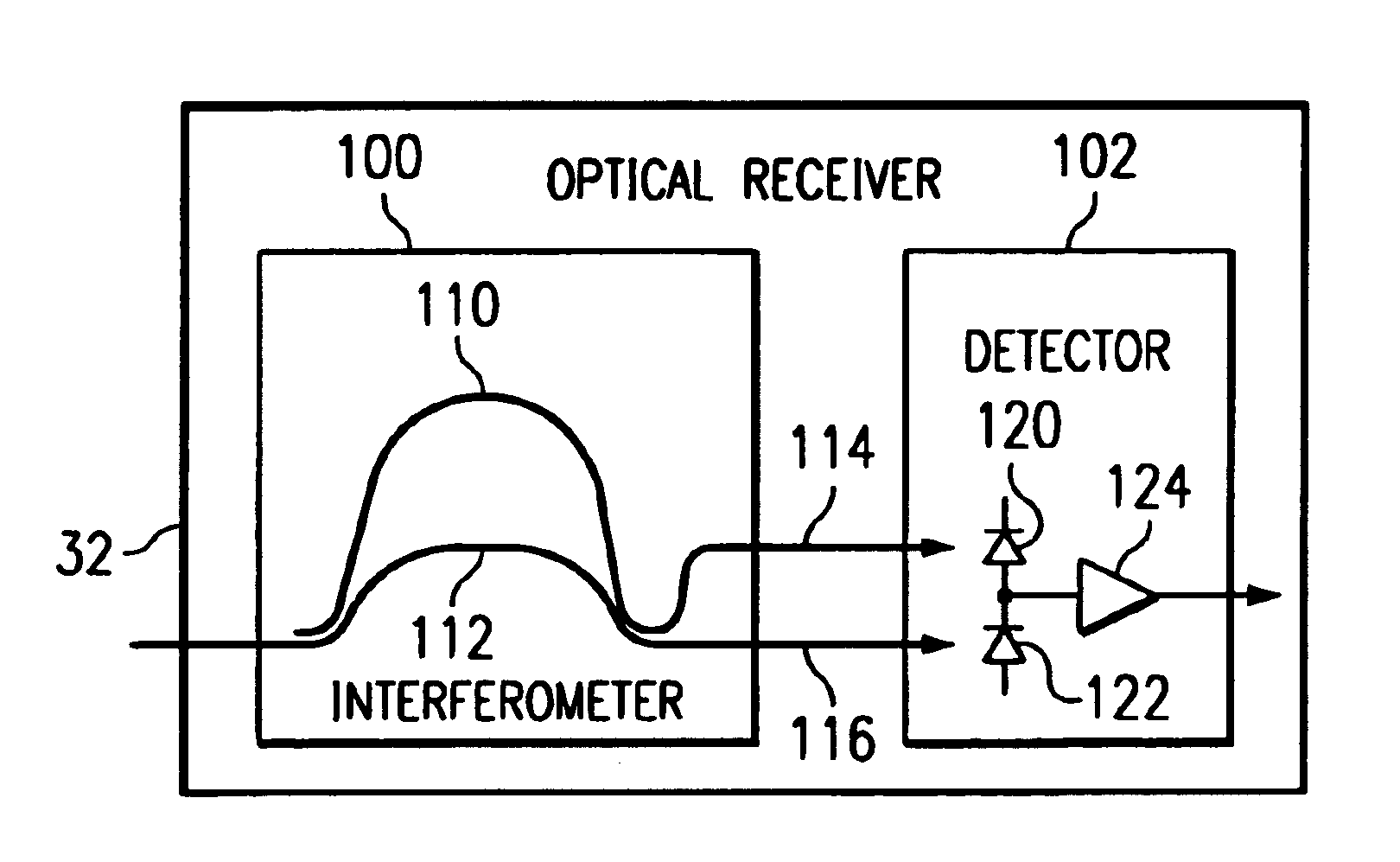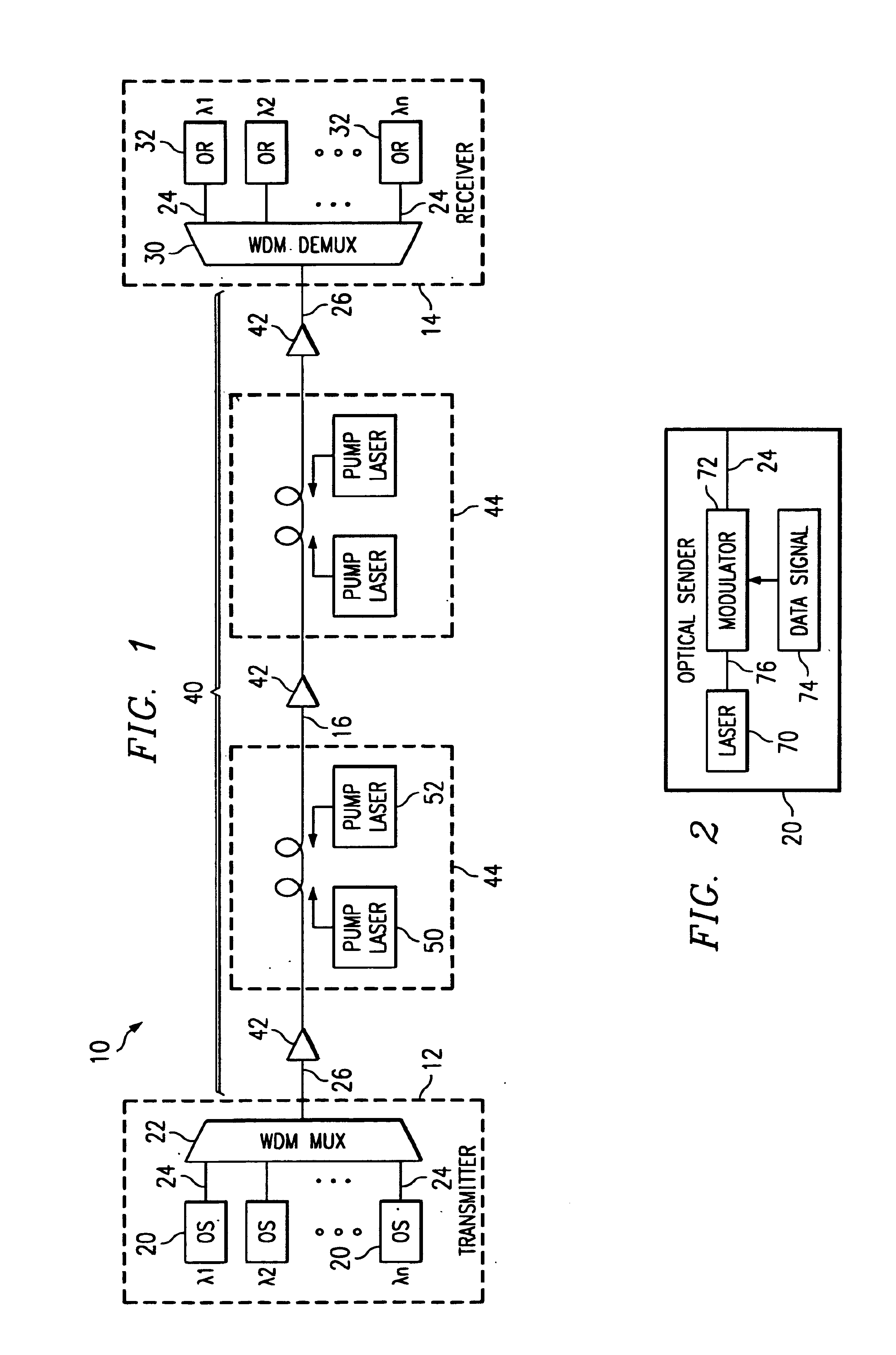Receiver and method for a multichannel optical communication system
a multi-channel optical communication and receiver technology, applied in the field of optical communication systems, can solve the problems of increasing the capacity of the network, increasing the cost of decreasing the ability of optical receivers to discriminate, and accumulating a number of nonlinear impairments along the length of the fiber, so as to reduce or eliminate problems and disadvantages, and increase the rejection of neighboring channels
- Summary
- Abstract
- Description
- Claims
- Application Information
AI Technical Summary
Benefits of technology
Problems solved by technology
Method used
Image
Examples
Embodiment Construction
[0029]FIG. 1 illustrates an optical communication system 10 in accordance with one embodiment of the present invention. In this embodiment, the optical communication system 10 is a wavelength division multiplexed (WDM) system in which a number of optical channels are carried over a common path at disparate wavelengths. It will be understood that the optical communication system 10 may comprise other suitable single channel, multichannel or bi-directional transmission systems.
[0030]Referring to FIG. 1, the WDM system 10 includes a WDM transmitter 12 at a source end point and a WDM receiver14 at a destination end point coupled together by an optical link 16. The WDM transmitter 12 transmits data in a plurality of optical signals, or channels, over the optical link 16 to the remotely located WDM receiver 14. Spacing between the channels is selected to avoid or minimize cross talk between adjacent channels. In one embodiment, as described in more detail below, minimum channel spacing (d...
PUM
 Login to View More
Login to View More Abstract
Description
Claims
Application Information
 Login to View More
Login to View More - R&D
- Intellectual Property
- Life Sciences
- Materials
- Tech Scout
- Unparalleled Data Quality
- Higher Quality Content
- 60% Fewer Hallucinations
Browse by: Latest US Patents, China's latest patents, Technical Efficacy Thesaurus, Application Domain, Technology Topic, Popular Technical Reports.
© 2025 PatSnap. All rights reserved.Legal|Privacy policy|Modern Slavery Act Transparency Statement|Sitemap|About US| Contact US: help@patsnap.com



